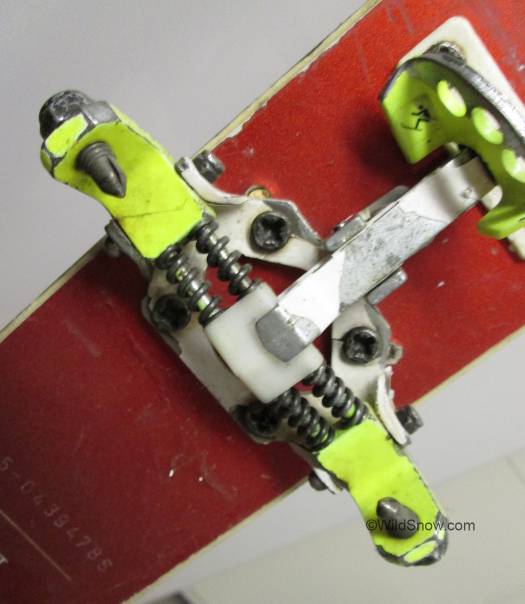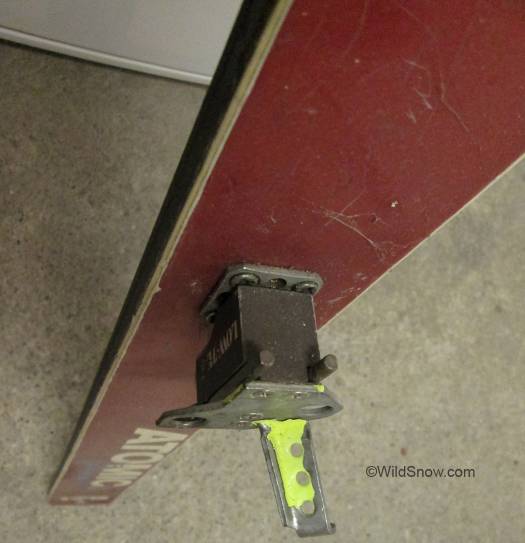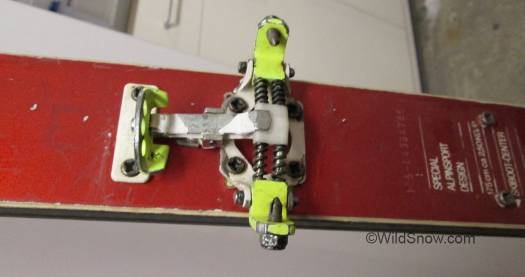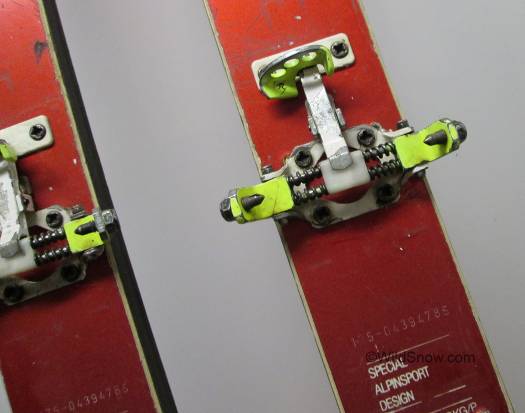
Manfred’s Low-Tec binding circa 1988. Note the wide travel and powerful springs. Also note the pins locked on with threaded nuts.
In 1987, tech binding inventor Fritz Barthel’s innovations had reached the point where Italian ski shop owners were stopping by his family home in Austria, loading up the trunks of their Fiats like arms dealers, and sneaking back across the Brenner using ancient smuggling routes to avoid taxation or worse.
The penalty for smuggling ski bindings was severe in those days, which is one of the reasons the European Union eventually wrote the “free binding travel” clause (FBT) into their constitution.
The popularity of the tech (then known as Low-Tec) binding exceeded expectations. It should have been obvious that millions would be sold, but it was not. The binding’s success initially surprised everyone. Perhaps Fritz was still too young to truly feel the “burn” and know for certain that making uphill skiing easier would foment a revolution in ski touring gear. Sure, he’s said that his own exhaustion burn on Mont Blanc is what birthed the concept. But one wonders how tired he really was (rumor is he has the same DNA as Franz Klammer), and we are led to the logical conclusion: the wine at the Mulets Hut was to blame.
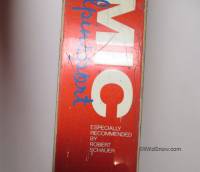
Irony is that around this time Manfred and Fritz had approached Atomic about licensing and making the binding, but Atomic was not interested in making a touring binding — though they did make good touring skis at the time.
In any case, once the Italian binding dealers attacked en mass (yes, even back in those seminal days they moved quickly, dressed in Lycra and driving nimble Fiats), it was obvious that large quantities of boots and bindings would have to be produced. Fritz met with companies such as Silvretta. “Not interested,” they said, and went ahead and built their own frameless binding which subsequently broke, and then broke their company.
Without any takers, it was up to the Barthels to finance their own manufacturing. Herr Barthel signed over his home to the bank and financed a thousand or so boots, along with binding production, to the tune of about $100,000.
Manfred got his money back. But more importantly, he got a nice Austrian garage manufactured pair of early tech bindings, assembled by himself and his son. His bindings were used for hundreds of ski tours, and three decades later you could still ski them in any tech compatible ski boot. Question being, are you man enough to rock a 60 mm Atomic plank made for Austrians such as Manfred and Fritz?
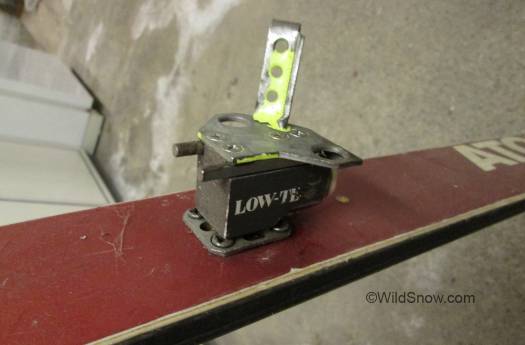
Heel unit had the non-adjustable forward (vertical) release spring, but the lateral adjustment was exactly the same as 30 years later. We like the heel lifter tower best, Was this the original anal intruder?
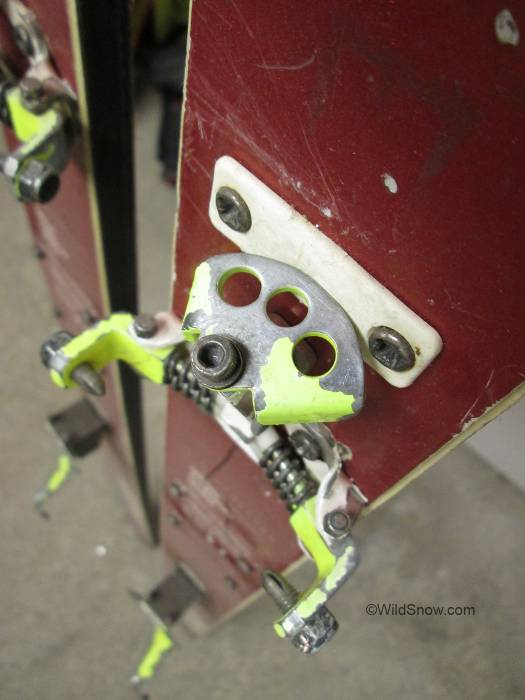
Manfred’s Early Low-Tec (pre Dynafit) bindings locked by rotating this cam so it jammed against the white plastic screwed to the ski. This is probably a 1988 binding, while the first production was in 1987.
For more incredible historical trivia, see our binding museum.
WildSnow.com publisher emeritus and founder Lou (Louis Dawson) has a 50+ years career in climbing, backcountry skiing and ski mountaineering. He was the first person in history to ski down all 54 Colorado 14,000-foot peaks, has authored numerous books about about backcountry skiing, and has skied from the summit of Denali in Alaska, North America’s highest mountain.

